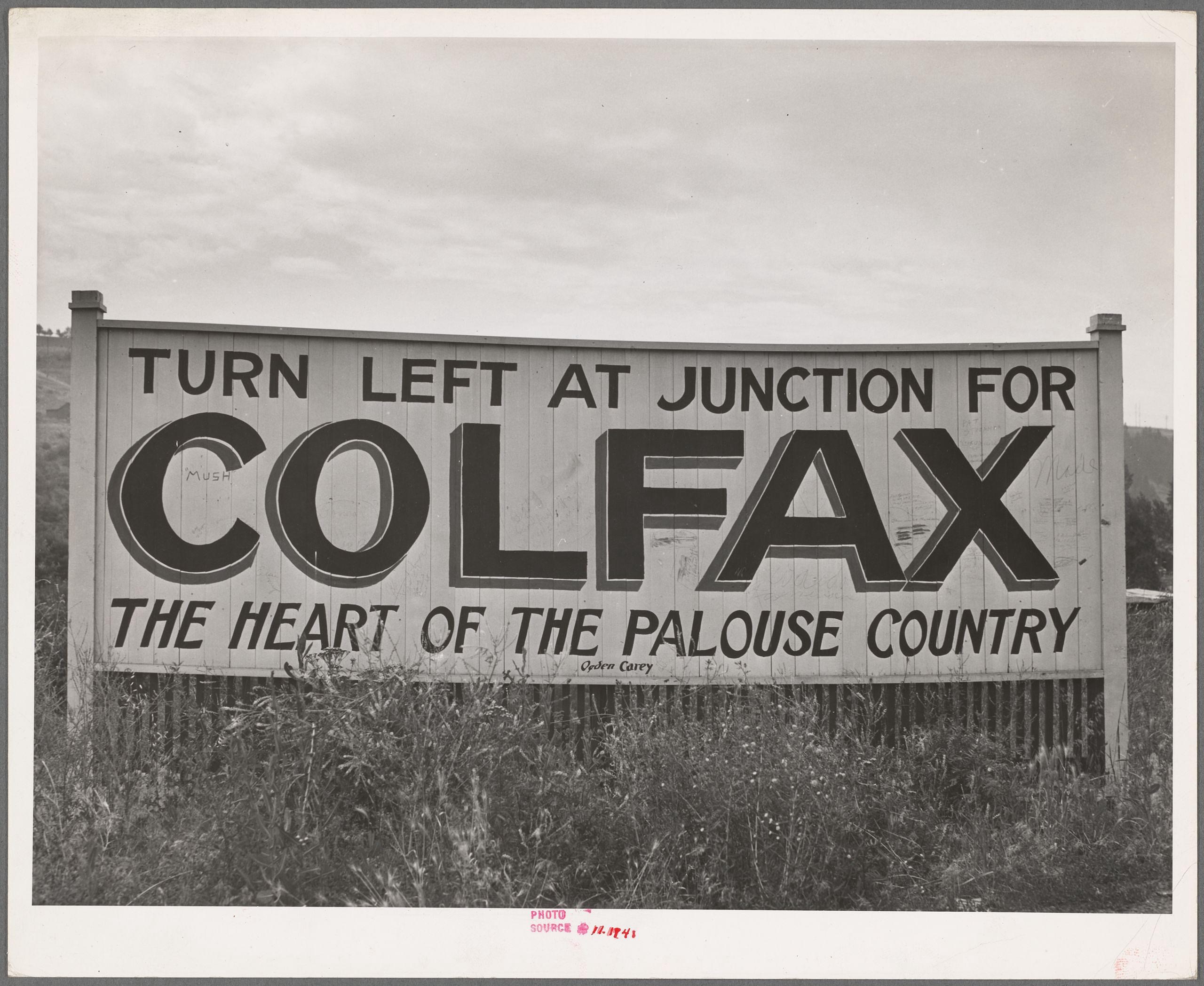ThePalouse

Russell Lee: Sign. Whitman County, Washington.
The Palouse country is most famous for its extensive wheatland
(1941)
" … dense fog settled around us."
Just to the north of this valley lies a rare country on this continent and in this world. Loess hills define Palouse Country, an area South of Spokane and West of Idaho, East of I-90, and North of the confluence of The Snake and Columbia Rivers, something less than a hundred miles square. Within this space lies considerable space, as if wide open was reimagined and arrayed in three full dimensions. Within its confines, tiny towns and isolated wheat stations dot a rolling landscape where wheat and lentils grow, and some of the finest barns anywhere stand. Driving through ThePalouse has always been a cleansing, a new beginning, a small vacation into another world.
I can't imagine ThePalouse when I'm not embedded within it. I feel embraced and welcomed, at home, though it has never been my home. Entering from the North at Sprague, basalt-rimmed pothole ponds and lakes give way to wheat and lentil fields. The road rolls like the surrounding hills. The speed limit's posted for fifty-five, but the corners caution forty and forty-five and the highway's all turns. Lazy turns and more frantic ones, we wend our way along. Time quickly becomes irrelevant. We do not explore ThePalouse to make good time but to lose track of time and immerse ourselves within its enormity. The Mullan Road, built through there in 1860, defined the route. We just follow its lead.
We drive the whole afternoon without seeing more than a handful of cars. The proper protocol for me is to pull over to encourage anyone behind me to pass. I do not need a parade, nor do I care to burden anyone else's dream. I know they're dreaming, too, suspended in sublime isolation, ten thousand imaginary miles from anywhere recognizable. Each turn reveals another unconventionally beautiful vista. The colors on a late November Sunday surprised us—a violet horizon over absolutely golden swatches, even Springtime green where the winter wheat has sprouted. The palette seems unusually rich. Swooning, I struggle to maintain my attention.
We began the drive in dead fog, creeping along, hugging the shoulder. We turned a corner, and the sky opened, welcoming our arrival. We drove for hours through frost-bitten fields, through towns we'd never heard of before. Remote couldn't start describing these places. This might be the end of the world or its beginning. It proves deceptively fecund, for it's some of the most productive land in the world, but in late November, it looks almost barren like desert. The scrublands bordering this place serve as enough defense to convince all but the most dedicated that they should take the routes around. This country didn't welcome civilization but forced its natives and later settlers to settle for what it offered. Few took it up on the offer.
We treasure this country just North of our valley. We returned through gathering fog late that afternoon, which already felt every bit like evening. We agreed that we'd seen no place we'd rather be, but we still appreciated the small vacation into that world beyond imagining. The fire roars in welcome, and the supper satisfies every intention. We'd spent the day in a world heavy on horizon, steeped in history, traveling at the speed of the human imagination. Filled with appreciation, we settled in for the evening as a nearly full moon rose just over our shoulders and dense fog settled around us.
©2023 by David A. Schmaltz - all rights reserved


